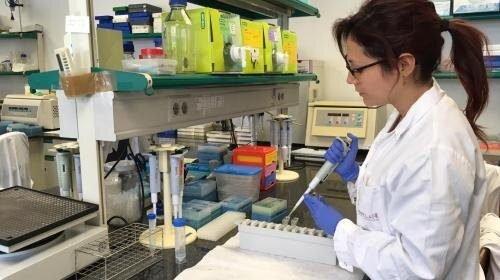Analyzing a protein from cerebrospinal fluid will help diagnose patients with prion diseases

Every year in Catalonia 15 new cases of Creutzfeldt Jakob Disease are diagnosed. It is a deadly prion disease whose cause is unknown and has no treatment, though it is very similar to mad cow disease, also brought on by prions and otherwise known as CJD variant. The challenge has always been to diagnose prion diseases when a person or an animal is suffering from them, since currently the definitive diagnosis can only be made once the patient is dead.
Recently, a study published in the Journal of Neurology, Neurosurgery & Psychiatry demonstrates that very high levels of neurogranin in the cerebrospinal fluid can be detected in human patients that suffer from prion diseases. The work has been led by researchers from The Network Center for Biomedical Research in Neurodegenerative Diseases (CIBERNED)) of the Institute of Health Carlos III (ISCIII), the Bellvitge Biomedical Research Institute (IDIBELL) and the UMG-Göttingen in Germany, with the participation of the PRIOCAT laboratory of the Animal Health Research Center (IRTA-CReSA). Thus far, studies have shown that patients with neurodegenerative diseases such as Alzheimer’s have higher levels of this protein in the cerebrospinal fluid. “We have now verified that the same effect magnified happens in people who suffer from the sporadic Creutzfeldt Jakob,” says Franc Llorens, researcher at CIBERNED and IDIBELL.
Neurogranin is a protein found naturally in neurons. Its role is to participate in the process of the synapse and can be detected by analyzing cerebrospinal fluid. Cerebrospinal fluid “surrounds and protects our central nervous system and fills up its cavities or ventricles, therefore it can give us much information about what is happening to the brain,” explains Enric Vidal, researcher at IRTA-CReSA. There are currently several methods to help diagnose prion diseases, but they are not completely reliable. In fact, these diseases can only be diagnosed with absolute certainty by analyzing the brain of the dead patient. “This finding will help us make more accurate diagnoses, since it is a biological sample that can be obtained when the patient is alive and is relatively easy to collect with a lumbar puncture,” the authors of the study confirm.
More information on the prognosis of the disease
Source: Read Full Article
